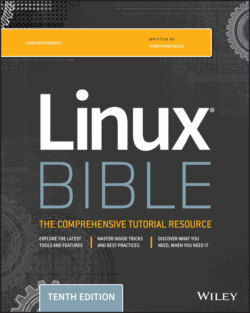Читать книгу Linux Bible - Christopher Negus - Страница 196
Executing and debugging shell scripts
ОглавлениеOne of the primary advantages of shell scripts is that they can be opened in any text editor to see what they do. A big disadvantage is that large or complex shell scripts often execute more slowly than compiled programs. You can execute a shell script in two basic ways:
The filename is used as an argument to the shell (as in bash myscript). In this method, the file does not need to be executable; it just contains a list of shell commands. The shell specified on the command line is used to interpret the commands in the script file. This is most common for quick, simple tasks.
The shell script may also have the name of the interpreter placed in the first line of the script preceded by #! (as in #!/bin/bash) and have the execute bit of the file containing the script set (using chmod +x filename). You can then run your script just as you would any other program in your path simply by typing the name of the script on the command line.
When scripts are executed in either manner, options for the program may be specified on the command line. Anything following the name of the script is referred to as a command-line argument.
As with writing any software, there is no substitute for clear and thoughtful design and lots of comments. The pound sign (#) prefaces comments and can take up an entire line or exist on the same line after script code. It is best to implement more complex shell scripts in stages, making sure that the logic is sound at each step before continuing. Here are a few good, concise tips to make sure that things are working as expected during testing:
In some cases, you can place an echo statement at the beginning of lines within the body of a loop and surround the command with quotes. That way, rather than executing the code, you can see what will be executed without making any permanent changes.
To achieve the same goal, you can place dummy echo statements throughout the code. If these lines get printed, you know the correct logic branch is being taken.
You can use set -x near the beginning of the script to display each command that is executed or launch your scripts using $ bash -x myscript
Because useful scripts have a tendency to grow over time, keeping your code readable as you go along is extremely important. Do what you can to keep the logic of your code clean and easy to follow.
